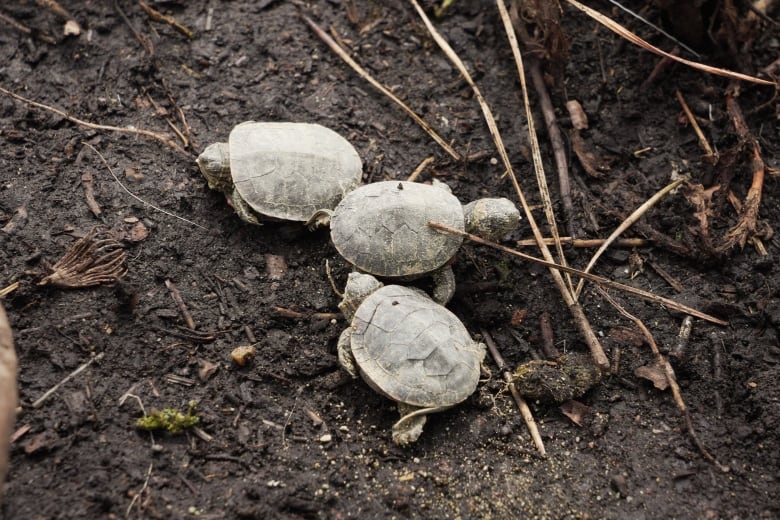Kootenay conservation groups work to conserve western painted turtle
East Kootenay conservation groups have created their own 'Turtle Day' to protect this endangered species

Conservation groups in B.C.'s East Kootenay have been working for the past 30 years to conserve western painted turtles, saying without intervention, the species will lose most of its nests to predators.
The western painted turtle is a blue-list species, meaning its habitats are at risk. Predation and habitat loss from human activity has specifically impacted the southern Interior population for decades.
The Rocky Mountain Naturalists, together with the Fish and Wildlife Compensation Program (FWCP), are working to conserve the turtles and their habitat in Cranbrook.
Greg Ross, a member of the Rocky Mountain Naturalists and a steward for the western painted turtles at Elizabeth Lake, has been looking after their nests for nearly a decade.
He says that without intervention, western painted turtles will lose 90 per cent of their nests to predators, mainly skunks.
Last year, only six of nearly 100 nests were lost to predation at Elizabeth Lake in Cranbrook, thanks to the group's efforts, Ross says.
Ross says they're hoping to reduce that number to zero and thinks events like Turtle Day, which was held at Elizabeth Lake on April 26, can help.
Turtle Day was created in 2014 by the FWCP in conjunction with the Rocky Mountain Naturalists. It's a free, family event. Wednesday saw more than 800 people in attendance.

Elementary and middle school students were at Turtle Day to observe demonstrations by Ross and others. They learned about the turtles' habitat, life cycle, and how the nests are maintained and dug up in the spring.
The Rocky Mountain Naturalists maintain and monitor the nesting area at Elizabeth Lake. They work with biologists for the province of B.C., with funding from the FWCP.
Angus Glass, the communications co-ordinator for FWCP, says Turtle Day helps spread the word.
"Turtle Day is all about encouraging the local school kids to come, and the public … so people are more aware of their habitat needs, their life cycle, and to really just get more love for western painted turtles."

A unique species
According to Wildlife Preservation Canada, western painted turtles are the largest subspecies of painted turtle, with dark shells that can reach 25 centimetres long.
Their plastron, or underbelly, is typically red in colour with a unique design. Ross says each plastron is different and likened it to a person's fingerprint.
The turtles can live up to 50 years — that is, if they survive infancy.

Turtles hatch from their eggs in late August, staying buried underground in their nests until spring.
Around this time of year, the hatchlings begin to emerge from their nests in search of water. Sometimes they will travel a great distance from their nest to the water, often without the protection of their parents.
Ross helps that process by digging up the nests and physically putting the turtles by the water's edge.
"We'll put them closer to the water because I don't like to just leave them on the beach … it's amazing the predators that will come [for them]," he said.
Creating a safe haven for turtle nests
Elizabeth Lake is located on the side of Highway 3/95 in Cranbrook.
Ross says that years ago, the turtles who call the lake home would make their nests across the highway, causing further deterioration of the population. Many turtles ended up being struck by vehicles.

Now, the turtles don't have to cross the busy road.
Instead, the Rocky Mountain Naturalists have created a safe zone on the shores of the lake that is fenced in. It deters predators while also allowing the turtle nests to be closer to the water.
"To be able to do this work, I'm so proud," Ross said.

